Stefan Sagmeister: The Happy Show
Copies of Stefan Sagmeister’s Things I Have Learned in My Life So Far are carefully culled from a cardboard box and arranged like the Great Pyramid of Giza in the gift shop at Toronto’s Design Exchange. Handled like bone China, this inanimate book with content so far from idle has the razor-edged expression of irony. Its author, a wonder of the design world, is upstairs readying his highly anticipated exhibition for tomorrow’s big reveal. True to stereotypes, the New Yorker is running half-an-hour behind schedule.
It’s 12 p.m. and beside the shop, two men have just begun adhering life-size letters to a freshly painted taxicab yellow wall in an artery of the original Toronto Stock Exchange building. By the time Sagmeister is ready, the first six characters of his forthcoming exhibit’s title, “The Happy Show,” are revealed. A cheeky caricature of a copulating couple covers the face of an elevator, offering a taste of what awaits as its doors provocatively slide open to let us in. On the second floor, the man of the hour is heard though not seen, wrapping up his third consecutive interview. Visitors are cautiously welcomed by Sagmeister’s handwritten advisory: “This exhibition will not make you happier.”
The show is a sensorial glimpse of the designer’s decade-long exploration of that very emotion. This multimedia endeavour metamorphosed from maxims in his personal diary to a poetic book to a public portrayal of finding life’s ultimate purpose that will unravel in a feature-length documentary scheduled to debut in the fall of 2013. Sagmeister makes his mission clear through the words of French mathematician and philosopher Blaise Pascal lacquered on one of the walls: “All men seek happiness. This is without exception. Whatever different means they employ, they all tend to this end. The cause of some going to war, and of others avoiding it, is the same desire in both, attended with different views.”
Those polychromatic views are ubiquitous in this above-ground, underground-like space. A happiness scale designed out of 10 vertical gumball machines poses a stimulating question: How Happy Are You? Research on marital satisfaction, statistics on country-to-country happiness, evidence that money doesn’t mean much, video installations and typographic quotes from his coveted monograph, such as “Trying to look good limits my life” and “Keeping a diary supports personal development,” are especially striking.
When Sagmeister emerges from a pop-up wall in the centre of the room, he instantly quells any preconceived notions one might have of a crowed-about graphic designer with a self-titled studio in the Manhattan neighbourhood of Chelsea and a self-cultivated esthetic that’s gone global. “Hi, hi, hi,” he says in his rich Austrian accent and auspicious smile. Dressed in a wooly, charcoal blazer, dark jeans and butterscotch Oxford shoes, the towering 50-year-old, known for his Rolling Stones album covers, edgy HBO ad campaigns and well-watched TED Talks, looks more like the rock star he once aspired to be than the A-list innovator he’s become.
“Look,” he says with excitement, flashing a teensy, yellow-faced catalogue from behind his back. His oversized hands flounder as they fan through the pocket-sized paperback, titled The Happy Film, which will double as pitch material for the movie. Just like the revenue from his speaking engagements, all of its profits will be funnelled into finishing the film. “This is my first time seeing it,” adds Sagmeister, who moved from Vienna to New York City on a Fulbright Scholarship in ’87.
A press coordinator asks if he’d like another coffee. His swelling smile says yes, but he hesitates as if we live in a world where lips could be read. “I always want another coffee,” he surrenders with a grin. We move to a leather bench where privacy pervades. It’s there that he explains his typical caffeine routine actually consists of seven to eight espressos a day, adding fuel to his organic alertness, his delightful repetition of words (ya, ya, ya, ya, ya), his need to cross and re-cross his legs every other minute, and his overall cheerful disposition despite having spent the last few days handwriting comments all over the exhibition. “I’m very happy with the progress, I think we’re going to be ready for the opening, ya.”
Challenging the profit-prophets of overcrowded ad agencies that mass-produce commerciality over creativity, Sagmeister has successfully branded himself an outcast. “Most design offices work to promote or to sell something, which is totally fine, and I admire the people that can do this in a fashion that is delightful, but I had always, since a long time, had the suspicion that it could also be used for other things — that if it can communicate ‘please buy this,’ it could also communicate many other things. So this is another attempt to see if that’s possible.”
His philosophy of keeping his studio small and principled has gone beyond attracting a like-minded client bracket. In 2010 it inspired 23-year-old multidisciplinary design prodigy Jessica Walsh (who turned down a lucrative job at Apple) to seek a position that would enrich her imagination. “Stefan’s work always struck a chord with me. I love that much of his work evokes emotion; whether it’s awe, shock, delight, disgust or humour,” says Walsh, who reached out via email. “He’s not only an extremely talented creative, but also very smart in business and a genuinely nice person. These are all things I strive for.”
Sagmeister, who has a reputation for hiring as infrequently as Microsoft modifies its logo, responded immediately and invited her to visit his eponymous studio on 23rd Street to chat. “Our meeting was very brief. After 10 minutes of flipping through my book he asked me if I would be interested in working with him,” she remembers. Last spring, he went a step further and elected to make Walsh a partner. News of the new alliance was exposed in a risqué mailer that featured both of them in the buff with the explanation, “Nineteen years after the founding of Sagmeister Inc., we are renaming the company to Sagmeister & Walsh.”
Just like the mailer, the selling point of “The Happy Show” is in the transparency of its message. It lacks the overly crafted, abstract distractions that can make highbrow art utterly incomprehensible. It’s meant to be understood, discussed and interpreted while giving you some saucy, visual condiments along the way. “I have no claim to know what makes Canadians happy,” says Sagmeister. “I can only talk about what makes me happy. But I have also realized as I get older that I’m much less special than I thought when I was younger, and that whatever is true to me, a whole bunch of other people can relate to, too.”
In the film, Sagmeister is seen as a social guinea pig for various happiness experiments that span from meditation to cognitive therapy and even pharmaceuticals. What has he learned so far? “Well, a good number of things. One would be that exercise works better than meditation, which was a big surprise to me because I had meditated before and found it helpful,” says Sagmeister. Throughout the process he’s read more than three dozen psychology books and consulted several leading experts.
“The whole show made a big difference in my life. I am engaged now which I wasn’t before, so definitely my life was clearly affected.”
Sagmeister has also become famous for his 365-day sabbaticals, which he takes every seven years to recharge his creative batteries. As he explains in a TED Talk called The Power of Time Off that has nearly 900,000 hits, taking five retirement years and interspersing them throughout your career can prove to be highly stimulating. After his first sabbatical in 2001, Sagmeister says his job became a calling again, his firm was financially rewarded and everything that followed was a product of time off.
He’s not alone. Both Google and 3M Co. have been lauded for their corporate innovation programs that offer employees a fair percentage of personal time to pursue work-related passions. These breaks supposedly bred the inventions of Gmail, Scotch tape and Post-it notes. “The work that comes out of that year flows back into the company and into society at large,” says Sagmeister. After informing his clients that he’d be conducting another full-year of experiments in 2008, he jetted to Bali where he awoke to roosters at 5 a.m., meditated, created furniture and continued filming his documentary. As for the next one, “I put things on a list but I don’t know yet where it’s going to be or how we’re going to go about it.”
Just as his working years are peppered with pauses, his words are punctuated by spaces of thought. In fact, the only story he seems to tell with the fluid recollection that leaves no room for hesitation is what Sagmeister deems one of his ultimate moments of happiness. It occurred in 1997, after he had just received the green light from The Rolling Stones to design their Bridges to Babylon album cover. “Keith Richards’s limo driver had picked me up at the studio and I think on that trip the sun was just going down and I was basically going to Newark Airport to fly to L.A. to meet them. That was the happy moment,” he says. “The meeting itself was more hilarious than happy.”
He dips back into his mind’s ink, redrawing the scene at Mick Jagger’s Four Seasons Hotel suite. “It was so movie-set like. I had seen very gigantic suites, but it was just enormous.” Jagger and Sagmeister began discussing their favourite Stones album covers, both agreeing, in reverse order, that Exile on Main St., Some Girls and Sticky Fingers were at the top of their lists. Cuing the comedy, drummer Charlie Watts, who was listening in, leaned over and quietly asked Jagger what the cover of Sticky Fingers looks like. “For many Stones fans, that’s their favourite album,” says Sagmesiter, of late pop artist Andy Warhol’s iconic jean cover featuring a working zipper. “The fact that the drummer didn’t know what most people consider to be the best album they’ve ever done was just hilarious to me,” he says, curling into a laugh.
Walsh offers another illustration. “The happiest I’ve ever seen Stefan was when he first fell in love — and when he was handwriting all over the walls at the first Happy Show installation,” she says. After an affable farewell, Sagmeister reunites with his bona fide business partner to present the freshly minted catalogue. Walsh teases that “it might be just a hair too small,” and they eventually segue into a storm of laughter. The advisory Sagmeister scrawled at the entrance is apparently a lie.
www.sagmeisterwalsh.com
“The Happy Show” will be running at Toronto’s Design Exchange until March 3, 2012.


































































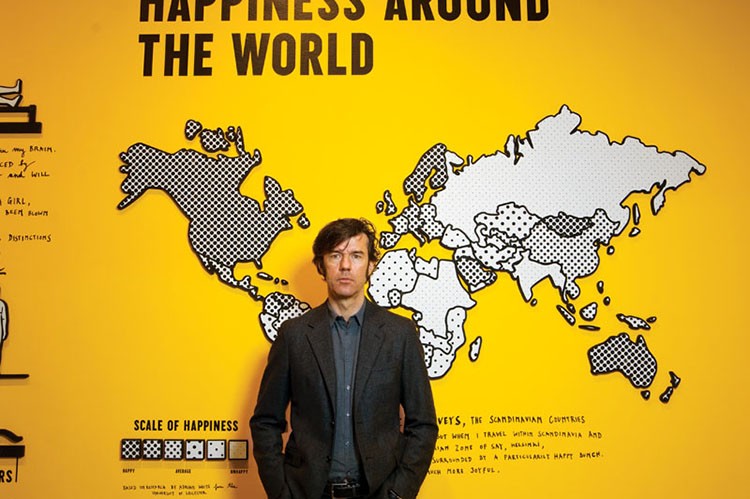
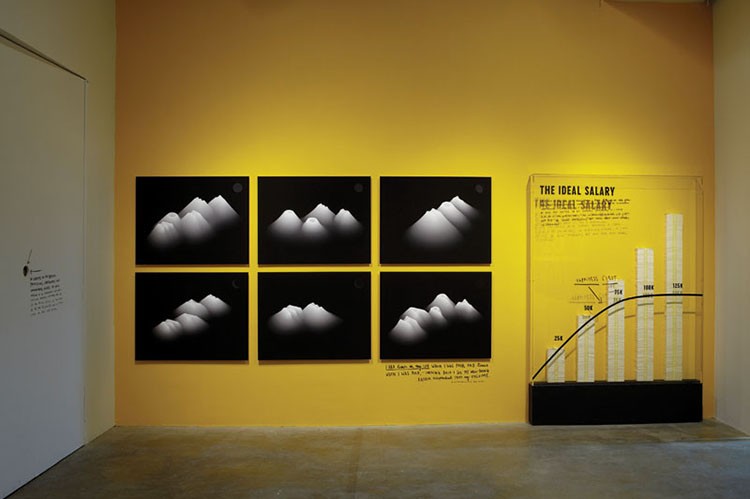
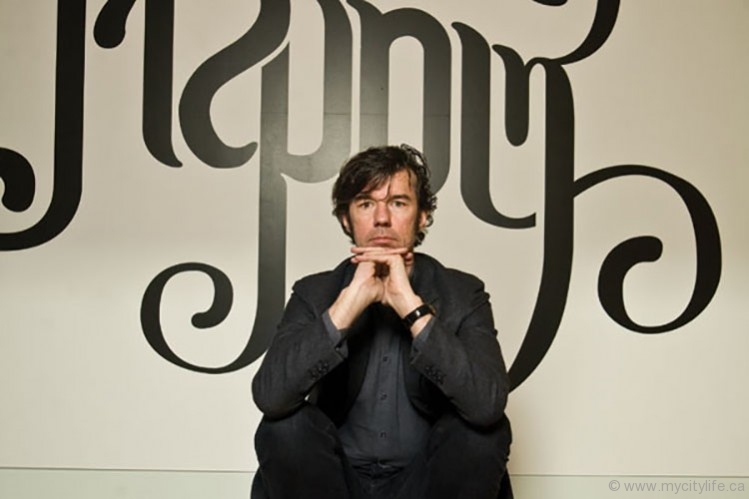
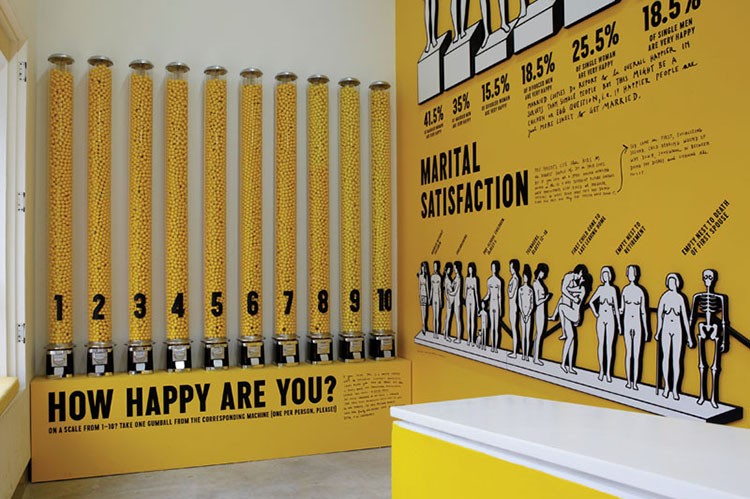
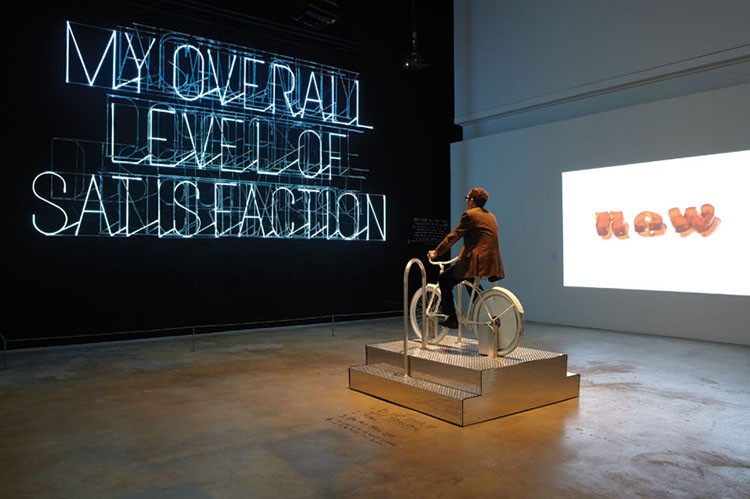
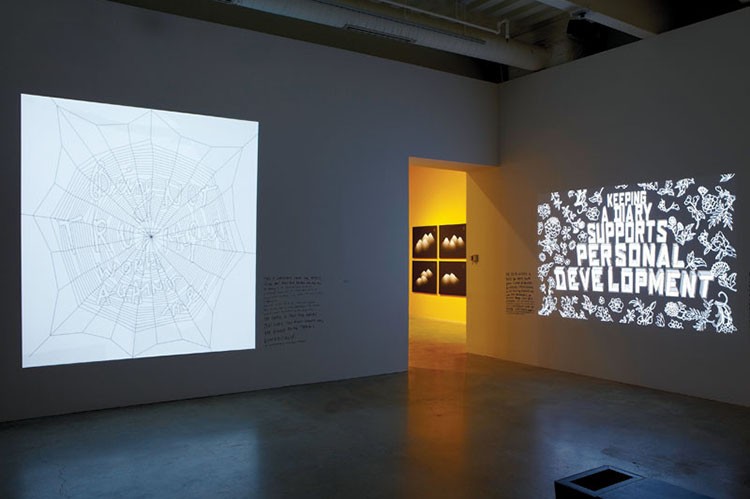



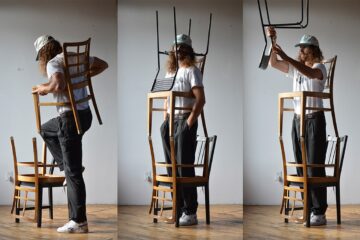


1 Comment